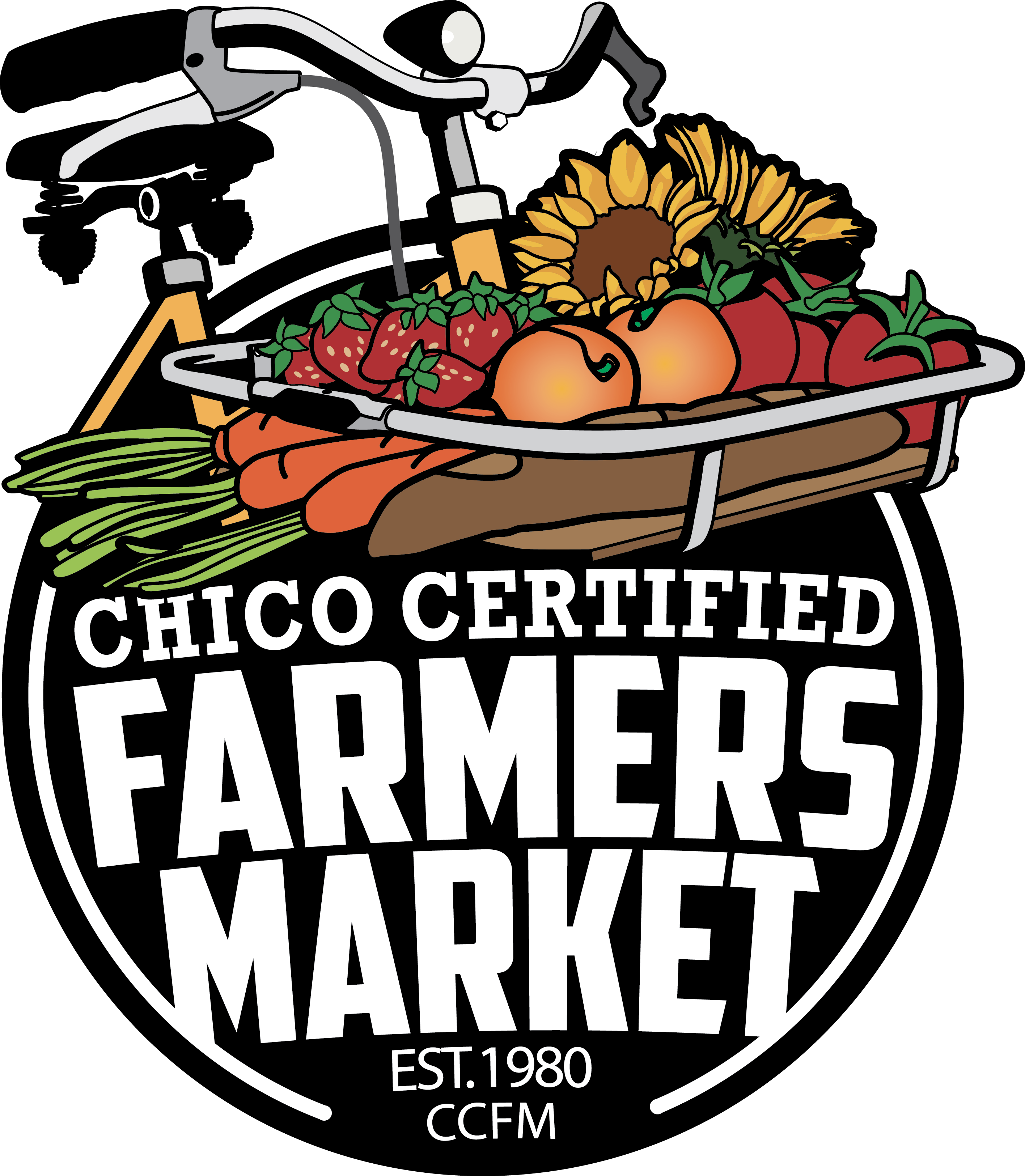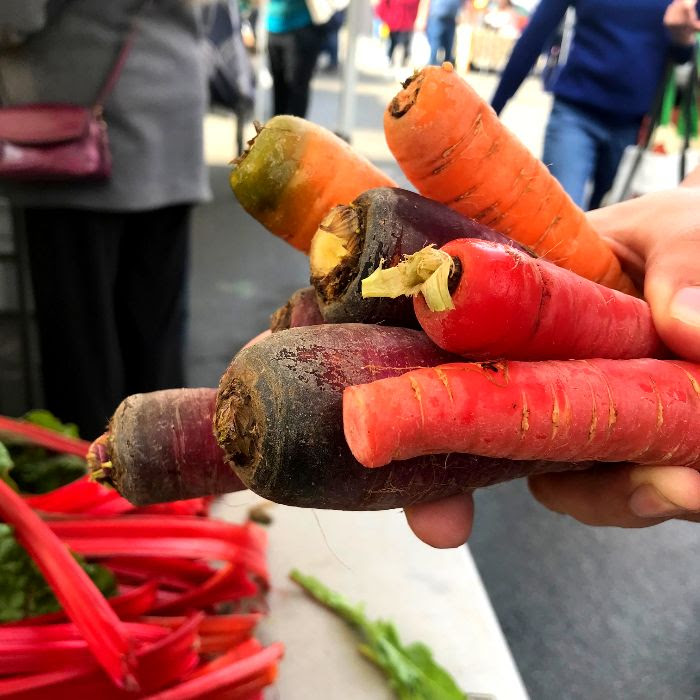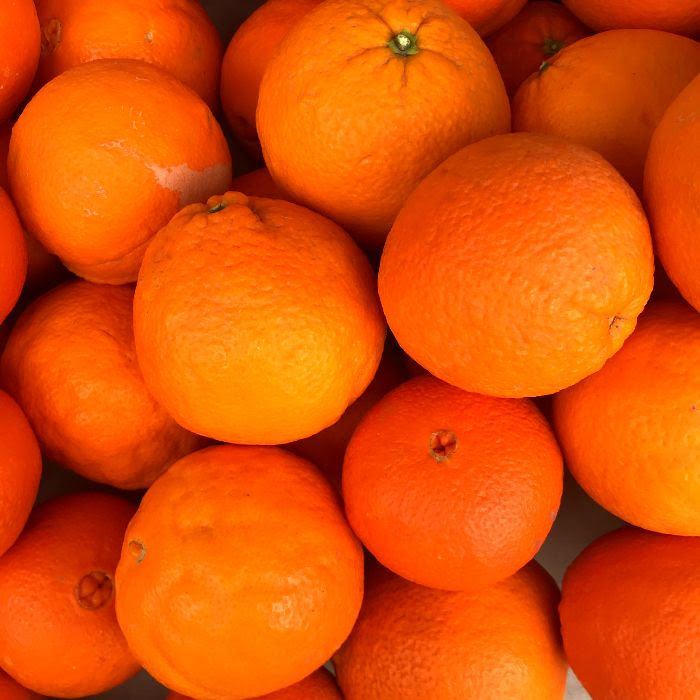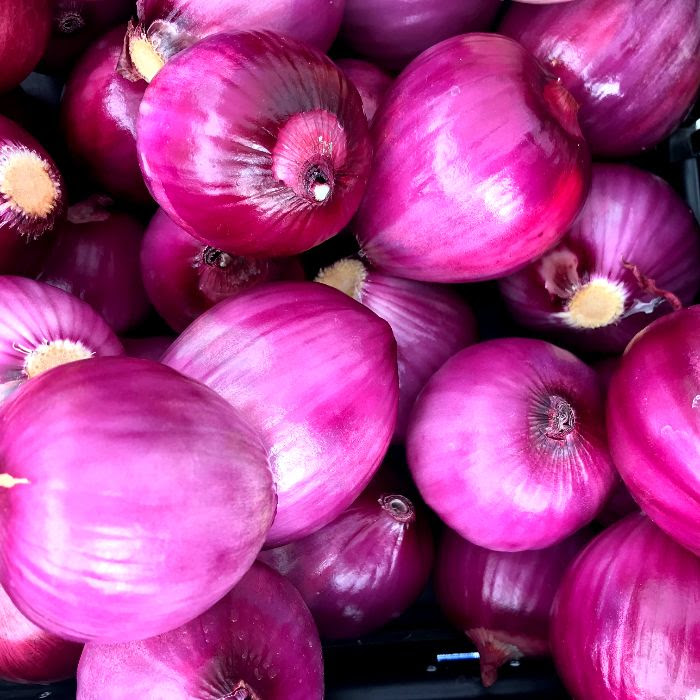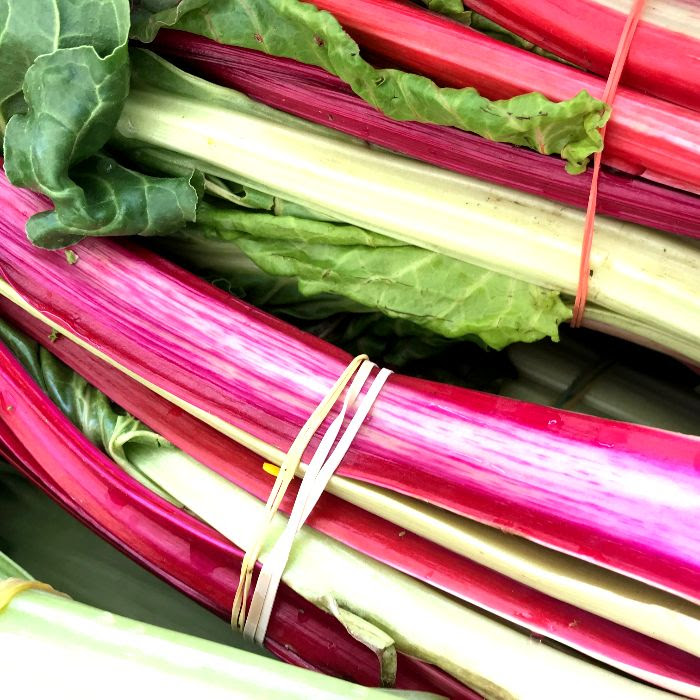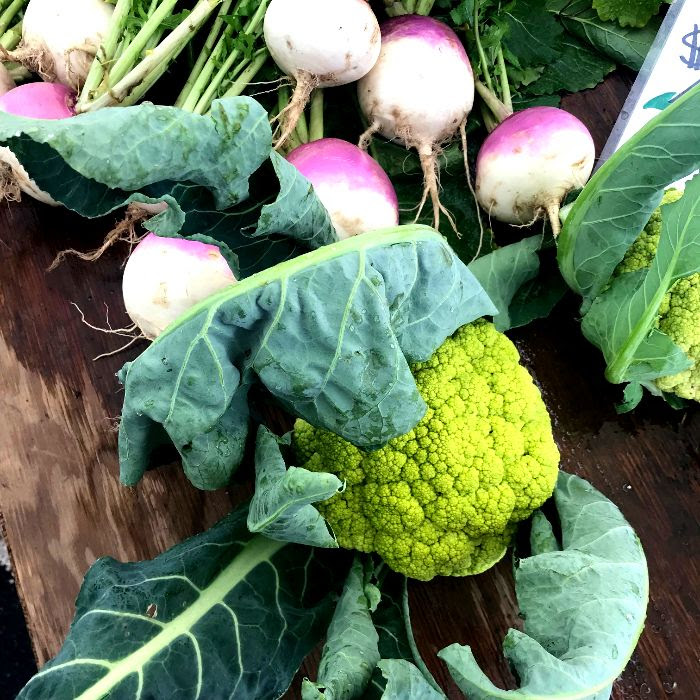Chilly weather can get a bad rap for being dark and drab, but we find it to be just the opposite at the Chico Saturday Farmers’ Market! As you walk down the market aisles you’ll find a vast array of hues. But why exactly are some fruits and vegetables green, some orange and others red? Do the different colors in these items matter, or are they only decorative in nature? The answer is pigments!
Fruits and vegetables fall into five different color categories: red, purple/blue, orange, green, and white/brown. The different colors of each fruit and vegetable is an indicator of which nutrients they contain. These colors are important, not just because of not because of their amazing coloring properties, but also due to their potential health-promoting effects. A general rule of thumb is the more colors you are eating, the more variety of nutrients you are getting! Some pigments also become more concentrated in fruits as they ripen, letting us know they are ready to eat. Our local farmers rely on these color indicators to know when fruits are ready for market!
Turns out these colors are more than just beautiful, they’re beneficial, too. So keep the rest of your brisk days bright – paint your meals with thediverse pallet available at the Chico Certified Farmers’ Market!
The Colors!
RED/PINK
Red fruits and vegetables are colored by a natural plant pigment called lycopene. Lycopene is a powerful antioxidant. Lycopene is thought to protect against oxidation damage, especially due to ultraviolet light exposure and tobacco smoke.
Look for: tomatoes, apples, beets, potatoes, chard, carrots, blood oranges, cara cara oranges, watermelon radishes, and pomegranates.
PURPLE /BLUE
The plant pigment anthocyanin is what gives blue/purple fruits and vegetables their distinctive color. Plants produce these phytonutrients to protect themselves against attacks from insects and damage from UV light. Anthocyanin also has antioxidant properties that protect cells from damage and can help reduce the risk of cancer, stroke and heart disease.
Look for: eggplant, blueberries, plumbs, broccoli, carrots, potatoes, cabbage, etc.
ORANGE/YELLOW
Carotenoids give this group their vibrant colour. A well-known carotenoid called Betacarotene is found in sweet potatoes, pumpkins and carrots. It is converted to vitamin A, which helps maintain healthy mucous membranes and healthy eyes. Another carotenoid called lutein is stored in the eye and has been found to prevent cataracts and age-related macular degeneration, which can lead to blindness.
Look for: sweet potatoes, winter squash, carrots, oranges, rutabagas, persimmons, beets, carrots, chard, lemons, and grapefruit.
GREEN
By far the most well-known kinds of pigments are chlorophylls, which are responsible for photosynthesis. Green vegetables contain a range of phytochemicals including carotenoids, indoles and saponins, all of which have disease preventing properties.
Look for: spinach, collards, artichokes, leeks, kale, brussels sprouts, asparagus, avocado, peas, kiwi, green beans, celery, cucumbers, and more!
BROWN/WHITE
Fruits and vegetables which are white in color form an important part source of key nutrients (especially fiber, potassium and magnesium). They contain a range of health-promoting phytochemicals such as allicin (found in garlic) which is known for its antiviral and antibacterial properties.
Look for: potatoes, cauliflowers, turnips, corn, parsnips, mushrooms, cauliflower, ginger, garlic, and onions.
